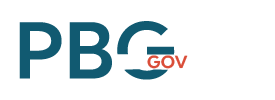5 Small Ways to Insert Innovation (and 1 Easy Way to Kill It)
We are in an exciting time, where technological innovation is impacting everything we touch; it feels like a ten-year promise is coming to fruition. And, sure, “innovation” is a buzz word (it appears on almost every consulting firm’s website, on countless resumes and LinkedIn profiles), but it’s one with real substance behind it. Government agencies have entire offices and programs built around it, like DARPA’s Information Innovation 2.0, OPM’s Office of Strategy and Innovation, and USAID’s Center for Innovation and Impact, to name just a few. We see solicitations from Federal agencies asking for innovation in all manner of procurements, and many are even evaluating proposals and past performances based on a company’s demonstration of innovation in mission support. This is a good word! It’s a great cause! But what if you aren’t working in a tech incubator, or an office dedicated to driving innovation? How do you, in your sphere of influence, insert innovation day to day, project to project, team member to team member?
Based on PBG’s innovation practices, here are five easy ways to do it, and one behavior that will prevent it.
- Think Small. Innovation can be so big, so impactful, that we tend to think of major disruptors like generative AI. But most of us need to start with what’s in front of us: what’s tangible, in our power, and fixable. Finding ways within our own workstreams to improve processes, communication, or automate simple tasks can build capability, confidence, and create the habit of innovation.
- Get Quiet. Whether you are a leader by title or a leader by nature, it can be tempting to speak first, especially when you are met with silence. Or, you may be in the habit of bringing an idea to the table, and then saying, “anyone else? What ideas do you have?” Instead, get in the habit of posing a challenge or a question and then . . . waiting. This is especially hard for some of us, but letting the silence sit gives team members a moment to digest or to speak up because the silence becomes unbearable.
- Diversify Your Conversation. At PBG, we have a culture of “diversity of thought,” which is critical to injecting new ideas and perspectives into the work we do both with customers and internally. It means that our team, and therefore our conversations, are comprised of people from a variety of cultures, educational backgrounds, career experience, generations, and life experience. When you get quiet, you want the people who speak up to bring ideas you would never have thought of, ideas that are different from those of anyone else in the room. Hiring diverse team members drives innovation, and so does inviting employees from other functional areas, client teams, or skillsets to join your meetings or innovation sessions.
- Play Pretend. The greatest limiter of innovation is our current reality. It can be invaluable to remove the environment, the resources, the tools—even yourself—from the challenge you are trying to solve or the new thing you want to build. Pose questions to the team like “What would we do if we had an unlimited budget?”, “Imagine the President said we had to have this solved tomorrow, how would we fix it?”, or “What would the exact opposite of what we’re doing now look like?”
- Keep Lists. Maybe this one doesn’t sound innovative, but never underestimate the power of a good list. Create two lists in the collaboration tool of your choice: one for team members to log issues/pain points/blockers they run into as they run into them, and one for ideas, even the seeds of ideas, to be documented as soon as they appear. When you see all the issues laid out (and, we hope, categorized and tagged to enable analysis), trends become clear and pressing needs for innovation are identified. The ideas list ensures that good ideas don’t flit away, as they tend to, and that you always have topics to brainstorm in your innovation sessions. Over time, the issues and ideas start to speak to each other, accelerating innovation points.
These five things are easy to implement within any team structure, in any workstream, at any time (for example, today). But what’s the easiest way to kill innovation? Lack of follow-through.
We have likely all seen an initiative that had great heart, employee engagement, and a fast start just . . . fizzle. This is frequently because after the exciting idea phase, there is no one and no way to implement them. When ideas go unrealized, innovation dies out. Even a simple framework that empowers team members to test ideas, moves ideas through an innovation pipeline, and closes out/operationalizes them creates trust in the process and inspires continued innovation.



